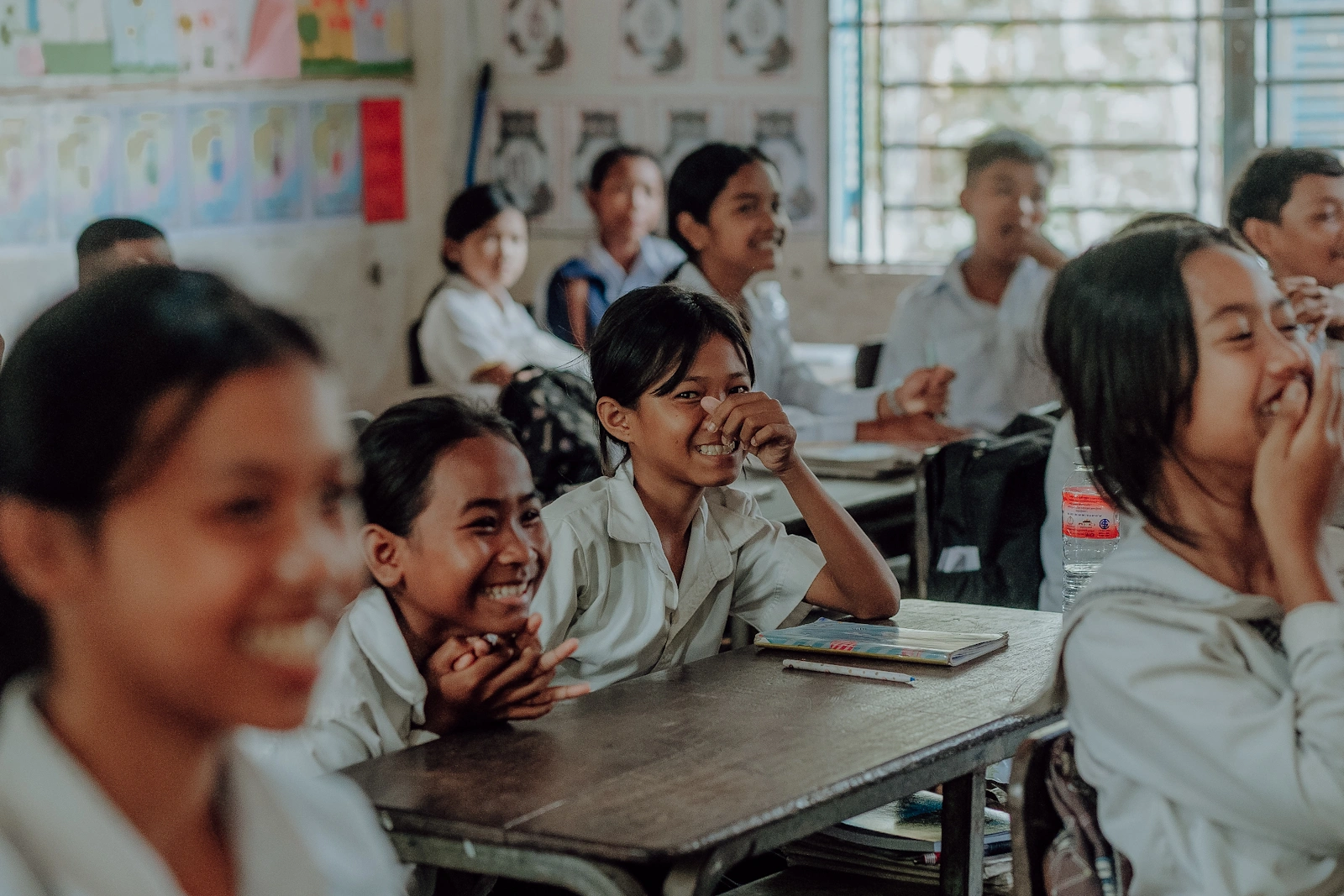Many of you have probably already heard something about human trafficking.
No one should ever become a victim! But how do people end up in such situations? How is it possible that, even today, people are exploited under conditions that resemble modern slavery?
There are many different reasons, and while the situation may look similar in different countries, it also has its unique aspects everywhere.
On one side, there is the urgent need of individuals (the victims), and on the other, the destructive behavior of those who exploit them (the perpetrators). The types of need, the ways people are exploited, and how these criminal acts occur are highly diverse.
We have gathered a lot of information and, here and there, have also heard personal accounts from survivors of human trafficking. That’s why we want to give you a closer look at what human trafficking actually means in Cambodia.
The economic situation in Cambodia steadily improved up until 2019. However, the effects of COVID-19 measures reversed much of that progress. In 2019 17,8%, of the population lived below the poverty line (10,951 Riel per person per day – roughly $2.60). Some estimates suggest
that this number almost doubled between 2020 and 2022 due to the impact of the pandemic. Additionally, around 30% of Cambodia’s population lives close to the poverty line (World Bank, 2017).
This aligns with what we have observed over the past four years here in Cambodia. Altogether, up to half of the population may be experiencing extreme poverty, making life a daily challenge for many.

Based on our experience in previous social projects in disadvantaged communities – and the insights of other organizations working in Cambodia – we have seen that there are many reasons why Cambodians fall into financial hardship.
The most common causes include educational deficiency, a lack of well-paid employment opportunities,, health emergencies, and exploitative debt systems. (Microcredit schemes,: for instance, have created an average per capita debt of around US $4,280– an amount that exceeds the annual income of 95% of Cambodians. Between 28–50% of borrowers are already over-indebted or at serious risk of it.
It continues to astonish us how many people here live under the weight of debt or have to provide for large families. We rarely meet anyone who is completely debt-free. With low wages and scarce job opportunities, it doesn’t take much for a family to fall into crisis.
This financial vulnerability makes it all too easy for traffickers and fraudsters to exploit people with false promises.
A common scheme involves offering high-paying jobs in neighboring countries. In many cases, people – sometimes minors – are smuggled across borders and handed over to others. The work they find is often nothing like what they were promised. We have heard from survivors who were held on fishing boats for years, never paid, and never allowed to leave. Others, particularly young women, were forced into illegal brothels, stripped of their identity documents, and subjected to severe psychological pressure. Fake “debts” are created to trap them further — fees for job placement, travel costs, and endless new “charges” that ensure they will never be free. Many victims carry a deep sense of obligation to their families. They endure unbearable conditions because they believe they must provide for their loved ones.
Some families, driven by desperation and misinformation, even hand their children over to traffickers who promise education, jobs, or a better life abroad — only for those children to be exploited instead.
Other forms of exploitation are widespread as well: labor migration to urban areas, sexual exploitation in beer gardens and entertainment venues, organ trafficking, and online abuse. In fact, one in ten Cambodian children with internet access has been affected by online exploitation.
The TIP Report 2022 highlights many of these issues, as does UNICEF’s in-depth analysis on child protection. However, from our own experience and the accounts of other NGOs, we know that official figures often underestimate the true extent of the problem — especially when it comes to human trafficking. The TIP Report itself points out that the Cambodian government has not yet done enough to address these challenges and still relies heavily on the efforts of NGOs working to combat human trafficking and protect vulnerable people (Trafficking In Person Report 2022).
We are deeply grateful for the strong partnership we have developed with the Ministry of Social Affairs here in Cambodia. Together, we are committed to ensuring that people can live in freedom and that trafficking can be stopped before it begins.
Since early December, we have expanded our team — we now have two female and two male social workers on the ground. The work is truly beginning to take shape, and in the new year, we will begin engaging directly with local communities.
Please stay connected, share our mission, and keep this work in your thoughts and prayers. Because this issue is not only Cambodia’s —
human trafficking and modern slavery exist everywhere.



